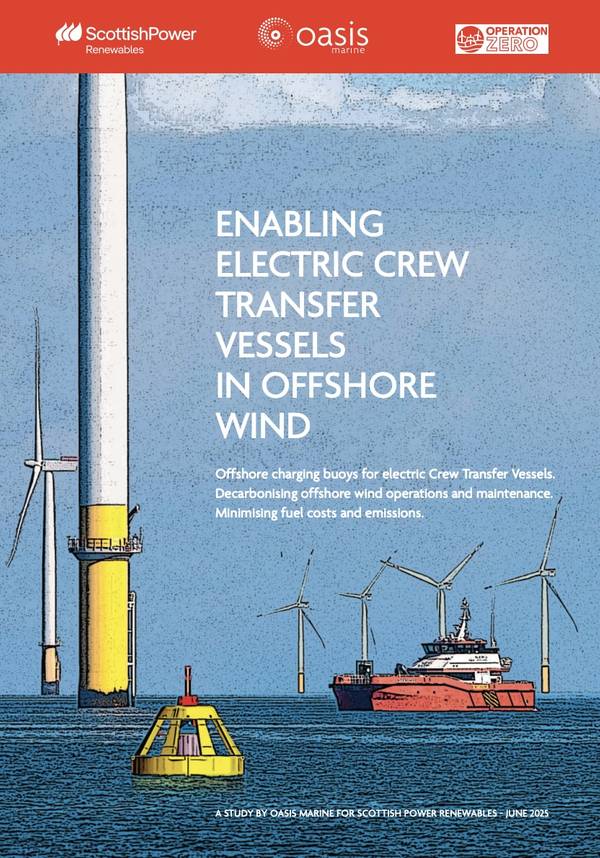Offshore charging for both battery-powered crew transfer and service operation vessels could be on the horizon for windfarms of the future, according to two studies…

Offshore charging for both battery-powered crew transfer and service operation vessels could be on the horizon for windfarms of the future, according to two studies commissioned by ScottishPower Renewables.
The two reports, by MJR Power & Automation and Oasis Marine, are the last in a series of three commissioned by ScottishPower Renewables (SPR) to explore options for decarbonizing and reducing greenhouse gas (GHG) emissions from offshore windfarm operations.
The studies consolidated initial findings that the electrification of offshore operations was technically feasible using battery-powered Service Operation Vessels (E-SOVs), which stay out at sea for extended periods.
They also looked at the potential to decarbonize offshore operations using electric crew transfer vessels (CTVs) that could be used for windfarms located closer to shore, with findings confirming that it is technically and operationally feasible.
In both scenarios, windfarms would also benefit environmentally and economically, with a significant reduction in both GHG emissions as well as annual fuel costs.
The Oasis Marine study identified that using electric CTVs enabled by installing Oasis Power Buoys in the windfarm provides protection from volatile fossil fuel price and
Content Original Link:
" target="_blank">



































































